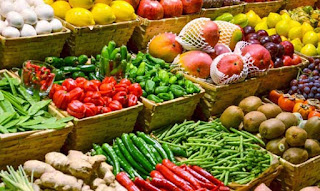Market Synopsis of Food Flavors:
The Global Food Flavors Market size is projected to reach approximately USD 18.51 billion by 2024 and is expected to register 4.2% CAGR during the forecast period, 2019–2024.
Food Flavor is considered as food additives or ingredients which are used commercially in food and beverages and in various other applications. Flavor indicates the sensory impressions of food or any other substance that is determined by chemical senses of taste and smell. It is the sensual impression of food or other applications such as beverages, cosmetic & personal care, nutraceutical and other end-use applications.
The Global Food Flavors Industry is anticipated to be driven by the mounting growth of disposable income of the consumers and increasing middle income population group in the developing economies which in turn accelerates the sales of food flavors during the forecast period of 2017-2023. Moreover, ready to cook such as noodles and pasta and confectionery products has been performing extremely well over the last few years which is anticipated to be one of the significant factors of the rising growth of food flavors. Also, ready to eat food manufacturers are coming up with various new food products in a different flavor that in turn escalates the sales of flavors soon. Also, food flavor manufacturers can penetrate their business into developing economies of Asia Pacific in order to enhance the overall revenue of the company.
Key Players
The key players profiled in the food flavors market are Givaudan SA (Switzerland), Firmenich SA (Switzerland), International Flavors & Fragrances Inc. (U.S.), Symrise AG (Germany), Takasago International Corporation (Japan), Wild Flavors, Inc. (U.S.), Mane SA (U.S.), Sensient Technologies Corporation (U.S.)
Infographic of This Report @ https://www.marketresearchfuture.com/infographics
Intended Audience
- Food Flavors manufacturers
- Raw material suppliers
- End users (food industry)
- Retailers and wholesalers
- E-commerce companies
- Traders, importers and exporters
For More Information @ https://www.marketresearchfuture.com/reports/food-flavors-market-4502
Regional Analysis
Global Food Flavors Market is segmented into North America, Europe, Asia Pacific, and Rest of the World (RoW). Among these, Europe is estimated to retain its dominance throughout the forecast period of 2017-2023. The increasing consumer awareness towards anti-aging products and healthy drinks are one of the significant reasons for the rising growth of food flavors products in the European market over the last decade. North America is estimated to account for above 25% of market proportion during the review period of 2017-2023. However, Asia Pacific region is estimated to witness a maximum growth in the global food flavors market during the forecast period of 2017-2023.
About Market Research Future:
At Market Research Future (MRFR), we enable our customers to unravel the complexity of various industries through our Cooked Research Report (CRR), Half-Cooked Research Reports (HCRR), Raw Research Reports (3R), Continuous-Feed Research (CFR) and Market Research & Consulting Services.

 Log in with Facebook
Log in with Facebook 






